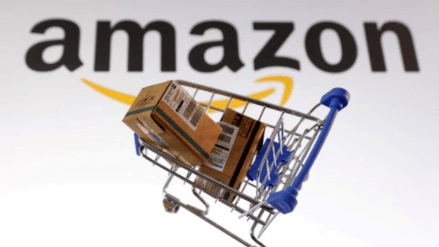As tariffs imposed under former U.S. President Donald Trump continue to impact goods sourced from China and other countries, Amazon is leaning on high-margin luxury beauty products to bolster sales during its upcoming Prime Day event, set for July 8–11.
With some Amazon sellers choosing to sit out this year’s Prime Day due to margin pressures from tariffs, the company is focusing on its growing Amazon Premium Beauty category to cushion the revenue impact. This segment, which includes cosmetics and personal care items, has become a strong performer due to its high margins and consumer resilience, even during economic uncertainty.
“Beauty has become, in the past few years, more of an essential item in consumers’ minds,” said Anna Mayo, Vice President of NielsenIQ’s Beauty Vertical.
Initially avoided by luxury brands concerned about image dilution, Amazon’s Premium Beauty program has gained credibility and now features well-known names such as Estée Lauder’s Clinique, Olaplex, and L’Oréal’s Urban Decay. Amazon has made efforts to reduce counterfeiting and build trust with both consumers and high-end brands.
Sales in the Premium Beauty category rose nearly 20% to $15 billion between April 2024 and April 2025, outpacing the 14% growth in the broader beauty sector and significantly exceeding the 5% year-over-year growth of online store sales overall, according to NielsenIQ.
Amazon’s strategy hinges on the fact that luxury beauty products are small, high-value, and easy to ship, which helps maintain strong margins. “They are making a lot of money on premium beauty products because they’re small and expensive, and you can ship a ton of them,” said Renee Parker, co-founder of consultancy firm Invinci and a former Amazon executive.
Discounts in the beauty segment are expected to be milder than in other categories this Prime Day. According to Adobe Analytics, beauty items may see discounts of 10% to 17%, while electronics are expected to offer 14% to 22% off.
The shift toward premium cosmetics has been helped by brands localising their supply chains. Estée Lauder, for instance, sources over 75% of its U.S. goods from the U.S. or Canada, shielding it from tariffs. The company has launched 11 brands on Amazon’s U.S. platform since March 2024.
Lauren Gordon, Vice President of Amazon at Estée Lauder, noted that Prime Day and other major Amazon sales events provide a valuable opportunity to connect with both new and existing customers.
Amazon’s Premium Beauty is an invite-only program that includes both first-party and third-party sellers, featuring more than 10,000 products. Brands such as Dyson and Aveda also participate, though terms with these companies are not publicly disclosed.
The move strengthens Amazon’s position against competitors like Ulta Beauty and Sephora, owned by LVMH, while helping the retailer attract older and higher-income demographics. At the same time, platforms like TikTok Shop are drawing in younger consumers.
Melis del Rey, General Manager for Health and Beauty at Amazon U.S. stores, said the team has worked closely with premium brands to manage the effects of tariffs. “At a high level, most of the premium brands’ sourcing strategies are local, and therefore, the (tariff) impact is less imminent,” she said.
Last year, U.S. shoppers spent $14.2 billion during Prime Day, up 11% year-over-year, according to Adobe Analytics. With Premium Beauty sales accelerating and tariffs reshaping sourcing strategies, Amazon is betting that luxury products will help sustain momentum during one of its most important shopping events of the year.
